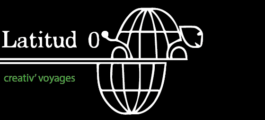IMPORTANT FESTIVALS AND EVENTS IN ECUADOR
IMPORTANT FESTIVALS AND EVENTS IN ECUADOR
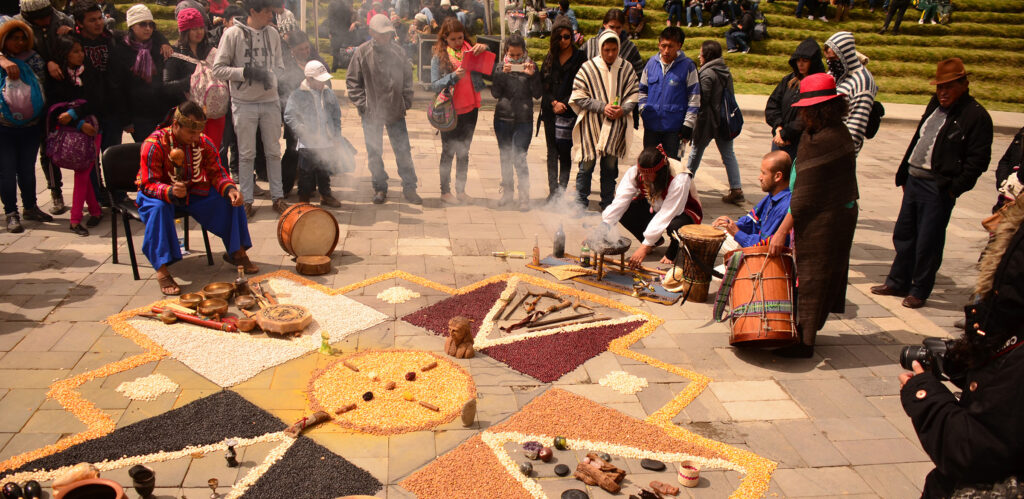
INTI RAYMI
The Inti Raymi, also known as the Festival of the Sun, is one of the most important and representative festivities of the Andean indigenous culture in Ecuador, although it is also celebrated in other regions of South America. This festival is held every June 24, coinciding with the winter solstice in the southern hemisphere, and is dedicated to Inti, the sun god, considered the most important deity of the Andean peoples.
Origins and History
Inti Raymi has its roots in the Inca Empire, where it was a key celebration to thank the sun for its blessings and to ask for a good harvest. During the Inca period, the ceremony included rituals, offerings and dances. With the arrival of the Spanish colonizers, many of these traditions were suppressed, but the Inti Raymi has endured since then to the present day.
Celebrations and Rituals Nowadays, Inti Raymi is celebrated with great fervor and color. Festivities include:
- Rituals and Offerings: The communities carry out ceremonies in which they offer products of the land, such as corn, potatoes and chicha. In addition, they perform rituals of thanksgiving and supplications for abundant harvests.
- Dances and Music: The festivities are characterized by traditional dances and Andean music. There are groups of dancers, with typical and colorful costumes that represent different indigenous communities.
- Parades and Processions: In the parades, ancient Inca ceremonies are recreated, with characters representing the rulers and priests.
- Main Ceremony: The celebration culminates with a central ceremony in which the presence of the sun is invoked and rituals are performed in its honor. This includes the burning of offerings and a symbolic sacrifice of llamas.
Cultural Importance Inti Raymi is more than a religious celebration; it reinforces the cultural identity and pride of indigenous peoples. This festivity helps preserve ancestral traditions and maintains a connection with nature, the land, and cultural roots. In essence, Inti Raymi is a vibrant celebration that honors the Andean relationship with the sun and nature, while strengthening cultural identity and traditions.
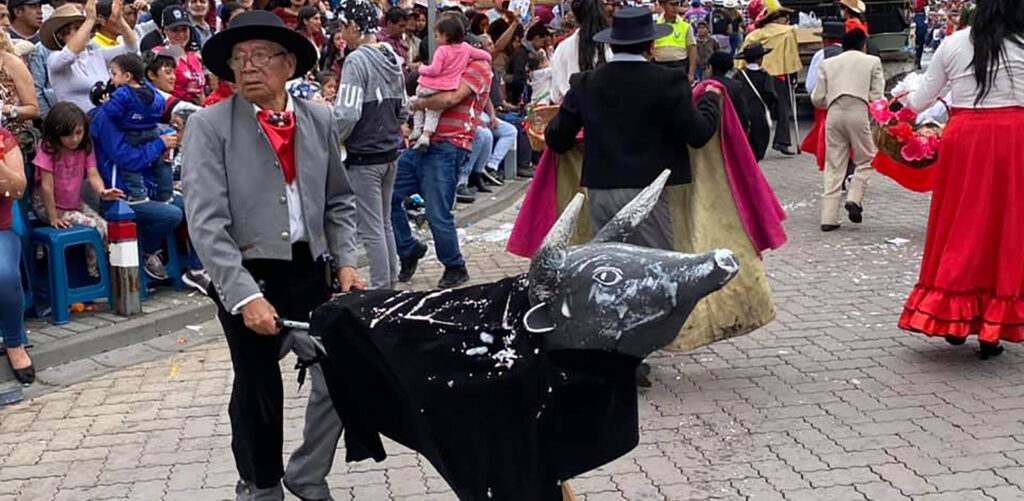
MAMA NEGRA
The Mama Negra is one of the most emblematic and colorful festivities in Ecuador, celebrated especially in the city of Latacunga, in the province of Cotopaxi. This festivity, which takes place in September, pays homage to the Virgen de las Mercedes and fuses elements of indigenous culture, African heritage and Spanish influence, becoming a rich and diverse expression of Ecuadorian identity.
Celebrations and Rituals The Mama Negra celebration dates back to colonial times and was born as a thanksgiving to the Virgen de las Mercedes for protecting the city during the eruptions of the Cotopaxi volcano. Over time, elements of indigenous and African traditions have been integrated, reflecting the rich cultural mix that characterizes the region.
Elements of the Fiesta
- The Mama Negra Figure: The central figure, Mama Negra, symbolizes a mestizo woman who, legend says, saved the city. She wears elaborate costumes with a flower crown and a pitcher, representing fertility and abundance.
- Parades and Comparsas: Festive parades feature people in traditional costumes and masks, each group showcasing aspects of local culture in a joyful atmosphere.
- Rituals and Offerings: Thanksgiving rituals to the Virgen de las Mercedes include offerings of local products, along with traditional dances and songs.
- Chicha and the “Paseo de la Mama Negra”: Participants share chicha, a traditional drink, with attendees, symbolizing unity and togetherness.
Cultural Importance Mama Negra is not only a religious celebration, but also a reflection of the cultural diversity of Ecuador. It represents a moment of encounter and where Ecuador’s traditions and cultural diversity are celebrated, fusing indigenous, African and Spanish traditions in a unique expression of identity and devotion. This festivity has been recognized by UNESCO as Intangible Cultural Heritage of Humanity, which highlights its importance and value in the Ecuadorian identity.
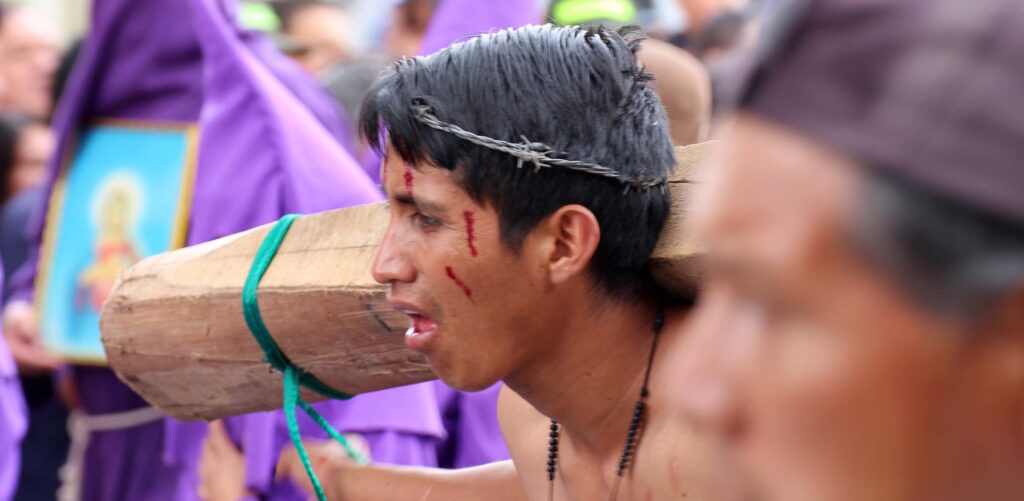
LA SEMANA SANTA / EASTER WEEK
Easter Week in Ecuador is a rich and diverse celebration that reflects the country’s cultural and religious heritage. During this holiday, which commemorates the passion, death and resurrection of Jesus Christ, numerous activities take place that merge the Catholic faith with local traditions.
Celebrations and Rituals Processions: In cities like Quito, Cuenca, and Loja, processions are central events. Parishioners in robes carry sacred images through the streets, creating a reflective and devotional atmosphere. The Holy Sepulcher procession in Quito is especially notable.
- Viacrucis: Participants recreate Jesus’s path to the crucifixion, with large events held in places like Ambato, featuring altars and prayers at each station.
- Gastronomy: Holy Week highlights culinary traditions, including fanesca, a soup with grains and fish symbolizing abundance and family unity, enjoyed on many Ecuadorian tables.
- Liturgy: Masses, the Washing of the Feet on Holy Thursday, and the Easter Vigil on Holy Saturday are key moments of spiritual reflection.
- Community Activities: Many villages celebrate with community-wide activities that foster social cohesion, including theatrical performances, concerts, and craft fairs.
Cultural Importance La Semana Santa, the Holy Week in Ecuador is a fusion of indigenous and Spanish traditions as the celebrations provide a unique perspective on the country’s history and identity. The devotion and fervor of Ecuadorians during this week reflect their deep respect for their beliefs and customs, making Semana Santa an essential event in the annual calendar. In short, Holy Week in Ecuador is a celebration rich in tradition, faith and community, highlighting the country’s cultural diversity and its commitment to religious traditions.
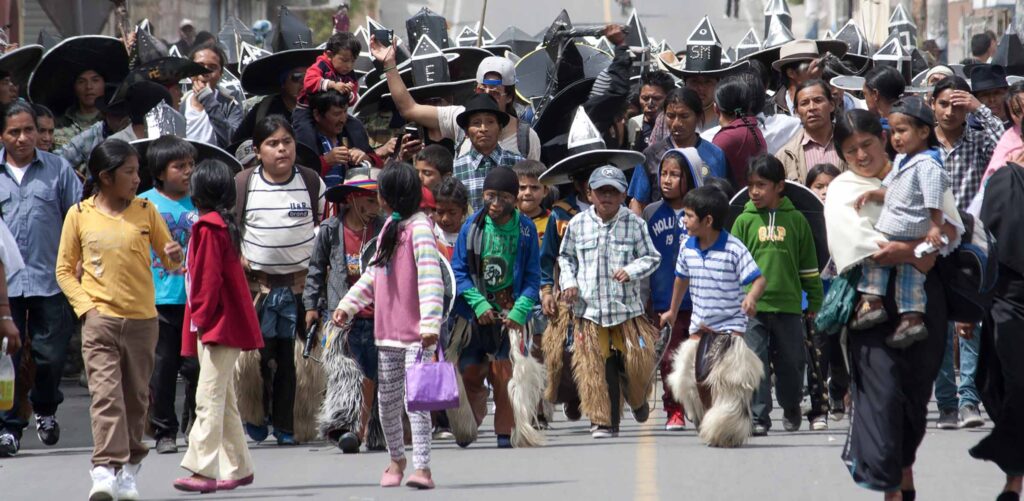
PAWCAR RAYMI
The Pawcar Raymi, also known as the Feast of the Earth or the Feast of Renewal, is a traditional celebration of the indigenous peoples of the Andes. It is held in August, coinciding with the harvest season, and represents a moment of gratitude and connection with nature.
Celebrations and Rituals Pawcar Raymi dates back to pre-Columbian Andean traditions, where indigenous communities paid homage to Pachamama (Mother Earth) for the blessings received during the year. This festivity reaffirms the sacred relationship between humans and the earth, while highlighting the importance of nature in everyday life.
Celebrations and Rituals
- Rituals of Gratitude: Pawcar Raymi includes ceremonies to thank Pachamama for the harvests and to ask for land fertility, with offerings of crops, flowers, and symbolic items.
- Dances and Music: Traditional dances and Andean music, unique to each region, celebrate cultural identity and ancestral traditions.
- Food and Gastronomy: The celebration features dishes made from harvest products like corn, potatoes, and quinoa. Shared meals strengthen community bonds.
- Parades and Community Activities: Parades, sports competitions, craft fairs, and cultural events foster a sense of community and belonging.
Cultural Importance Pawcar Raymi is a vibrant celebration that honors the connection of indigenous communities with the land and nature, highlighting the importance of gratitude and respect for the environment. This event not only preserves traditions, but also fosters social cohesion and cultural identity.
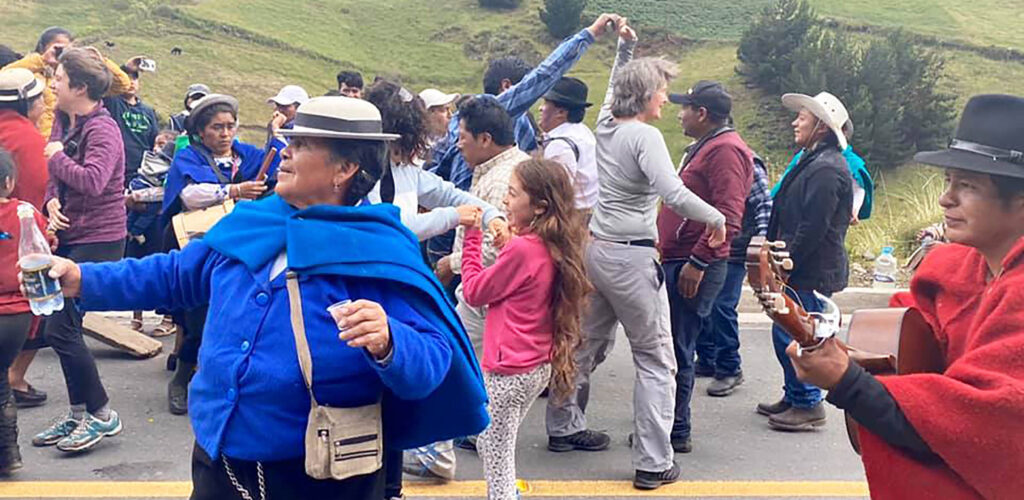
TIPS TO ATTEND THE FESTIVITIES IN ECUADOR
Here are some tourist tips to enjoy the festivities in Ecuador:
- Research Dates and Events Find out about the festivities that are celebrated in different regions of the country. Some of the most important ones are Easter, Mama Negra, Inti Raymi and Pawcar Raymi.
- Book in advance During the festivities, many people travel to the cities where they are celebrated. Be sure to book lodging and transportation in advance to avoid setbacks.
- Participate in the Celebrations Get involved in local activities, such as parades, dances and ceremonies. Ask the locals how you can respectfully participate.
- Respect Traditions Each holiday has its own customs and rituals. Learn about the meaning of traditions and always show respect.
- Taste the Local Gastronomy Don’t miss the opportunity to enjoy typical dishes that are usually offered during festivities, such as fanesca during Easter Week or chicha during Pawcar Raymi.
- Wear Comfortable and Appropriate Clothing Dress comfortably and appropriately for the activities you are going to perform. In some ceremonies, traditional or formal dress may be required.
- Consult with Local Guides Consider joining guided tours to help you better understand the festivities and their cultural context. Local guides can provide valuable information.
- Be Courteous and Open Maintain a respectful and open attitude toward local customs. Interacting with locals can enrich your experience.
- Maintain your safety As with any trip, maintain safety precautions, take care of your belongings and avoid areas that seem unsafe.
- Enjoy Nature Take the opportunity to explore Ecuador’s natural beauty, such as its mountains, jungles and beaches, which are often integrated into the celebrations.
- Capture Memories Don’t forget to bring your camera to immortalize the moments. However, be sure to ask permission before photographing people during the festivities.
- Be Patient Festivities can attract crowds, which can lead to congestion. Keep a relaxed attitude and enjoy the festive atmosphere.
With these tips, you will be prepared to fully enjoy Ecuador’s vibrant festivities. Happy travels!
